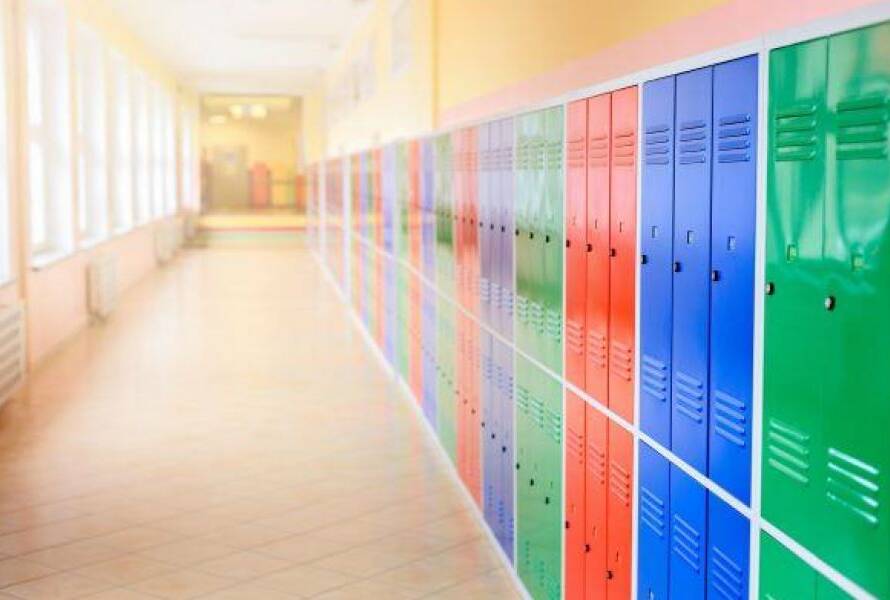In today’s educational environment, school safety is a top priority—not just for administrators, but for parents, students, and entire communities. Gone are the days when locking doors and hiring a school resource officer were sufficient deterrents to threats.
Modern challenges like bullying, vaping, substance abuse and even potential violent incidents have escalated the need for proactive, technology-driven solutions. As schools search for more effective ways to safeguard students, the integration of video surveillance and smart sensors is emerging as a game-changing approach.
Technology as a First Line of Defense
Security technology has advanced significantly over the past decade, giving rise to systems that are smarter, faster, and more responsive. Today’s schools need more than just eyes on hallways—they need systems that understand what is happening and react in real-time. This is where the combination of video surveillance and smart sensors comes into play.
Smart sensors can now detect an array of threats and issues. From vape smoke in bathrooms to raised voices indicating a possible verbal confrontation, and even gunshot detection, these sensors function as vigilant watchdogs.
When paired with a VMS, the real power of this technology is unleashed. Incidents automatically trigger alerts and link to specific camera footage, giving administrators instant access to the critical context needed to make fast decisions and take immediate action.
A Parent’s Perspective
Andrew Hayes, a regional sales manager at Salient Systems and the parent of a high school student, understands the emotional and operational stakes of campus safety. “The lack of proper resources and technology makes it difficult for schools to effectively manage safety concerns,” Hayes said. “It’s not just about preventing incidents but also about creating an environment where students feel protected.”
According to Hayes, the best systems do more than detect incidents—they prevent them. By making it clear that campuses are actively monitored and protected, smart surveillance acts as a deterrent. “When students know there are consequences—and that incidents will not go unnoticed—it changes behavior.”
Real-World Results from Forward-thinking Districts
Several school districts across the United States are already embracing this proactive model. Granite School District in Salt Lake City, for example, has begun deploying smart sensors to address the growing problem of vaping and substance abuse in middle and high schools.
These sensors do not just detect chemical signatures—they communicate directly with the district’s VMS, sending alerts to campus security and administrators.
“We’ve seen an increase in schools implementing these systems not just to catch incidents, but to deter them altogether,” Hayes said. “The goal is to shift power back to the schools, so educators can focus on teaching rather than crisis management.”
By enabling quick intervention, these systems help reduce the frequency and severity of incidents, creating a safer and more supportive atmosphere for learning.
Navigating the Privacy Conversation
Despite the clear benefits, a school districts remain hesitant about deploying surveillance tools due to concerns about student privacy. Students may worry about feeling watched, while parents may question the implications of monitoring their children in school settings.
However, federal legislation like the Family Educational Rights and Privacy Act (FERPA) provides a framework for responsibly implementing these technologies. Schools may use video surveillance and smart sensors if they avoid sensitive areas like bathrooms and locker rooms. Moreover, the primary goal of these systems is safety—not discipline or surveillance for surveillance’s sake.
“The misconception is that surveillance invades student privacy,” Hayes said. “In reality, schools are within their rights to use video and smart sensors to enhance safety. When implemented with transparency and proper oversight, these tools do not just protect students—they make them feel safer.”
Best Practices for Schools Exploring Smart Security
For school districts considering the integration of smart security systems, Hayes offers three key recommendations based on industry experience and firsthand observations.
Do Your Research
Before investing, study case studies and best practices from other districts. What worked? What did not? Take the time to understand the specific needs and challenges of your school environment.
Ensure Seamless Integration
A piecemeal approach can lead to complications. Choose systems designed to work together—ideally under a single platform. Integration between sensors, cameras and management software ensures fewer blind spots and better incident response.
Prioritize Staff Training
Technology is only as effective as the people using it. Ensure that school staff, from security staff to administrators, receive thorough training on how to interpret alerts, access footage, and respond quickly and appropriately.
The Path Forward
The shift toward proactive security is no longer a trend—it is a necessity. Modern K-12 campuses require modern solutions. Video surveillance integrated with smart sensors provides the situational awareness needed to act before a crisis unfolds, not just after.
In the future, we can expect even more innovation. AI-powered analytics that detect abnormal behavior patterns, sensors that can detect elevated stress levels, and even systems that communicate directly with emergency services in real time. This evolution is not only possible—it is already underway in forward-thinking districts.
“Ultimately, the goal is to create an environment where students and staff feel safe, and teachers can focus on what they do best educating the next generation,” Hayes said.
As technology continues to advance, its role in shaping a safer, more supportive educational environment will only grow. For school districts committed to keeping students safe and focused on learning, the message is clear: the future of campus security is smart, integrated, and essential.
Salient
Salient is the leading software provider of comprehensive, enterprise-class Video Management Software and Systems. Salient delivers best-in-class video surveillance solutions for critical infrastructure, transportation, logistics, retail, education, and more. By leveraging intelligent video technology, Salient helps mitigate risk, improve service delivery, and drive positive business outcomes for customers worldwide.
Salient’s award-winning CompleteView VMS platform offers a full range of applications for unmatched scalability through a fully open architecture. Citi Bank, Kirkland’s, University of Notre Dame, ABF Freight, Nike, and thousands of other customers trust Salient to provide powerful video-enabled surveillance and business intelligence solutions for today and tomorrow.


